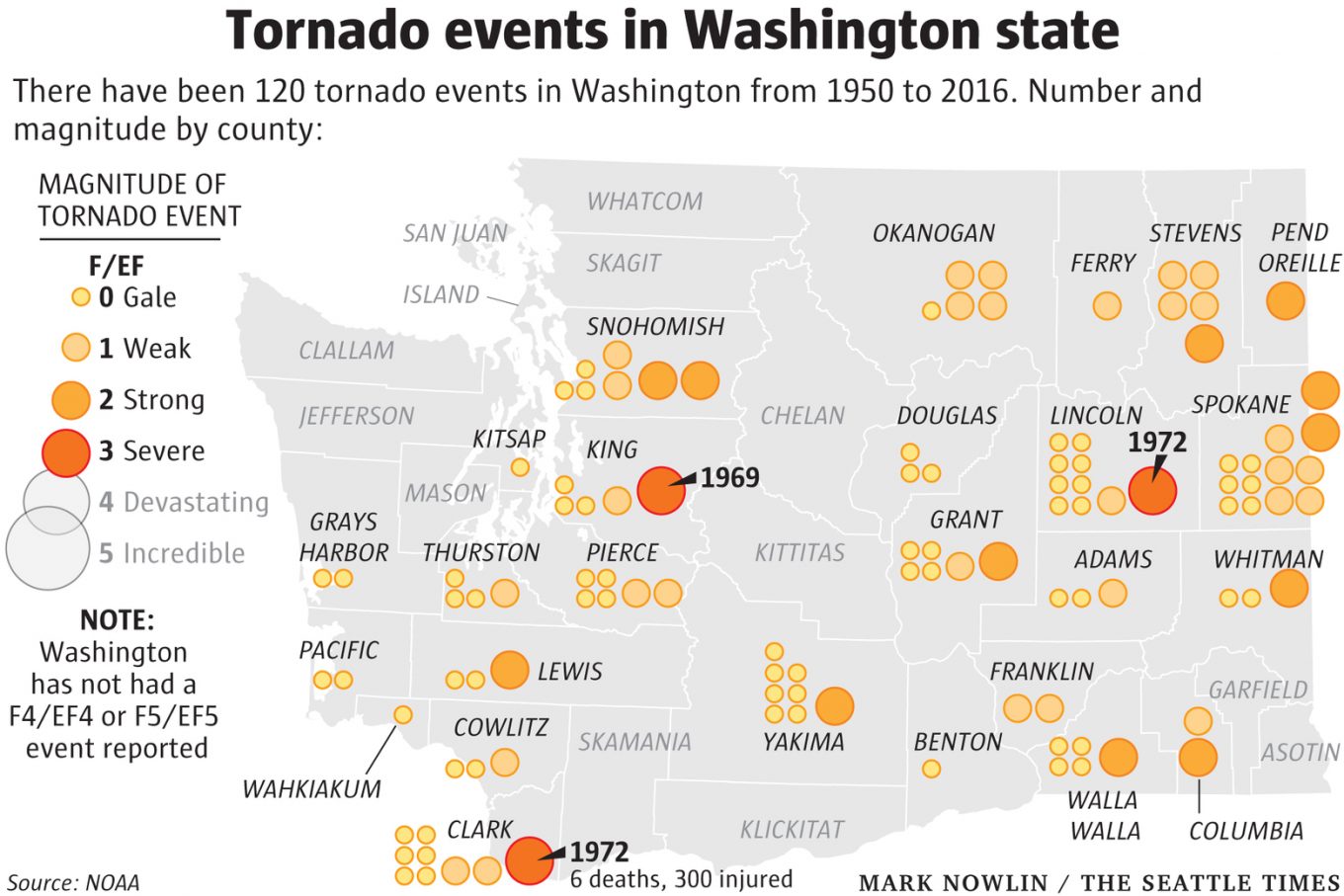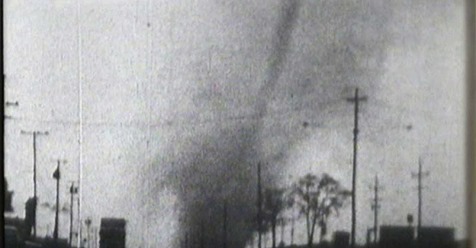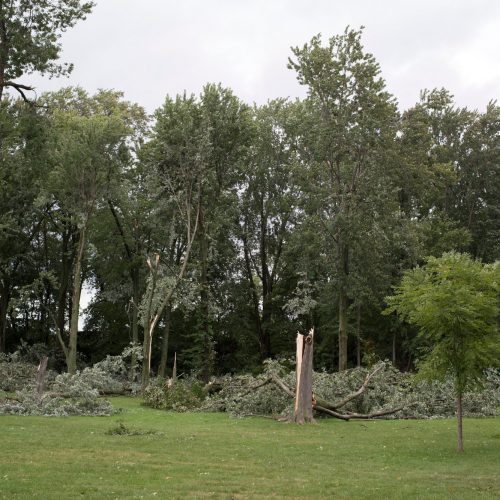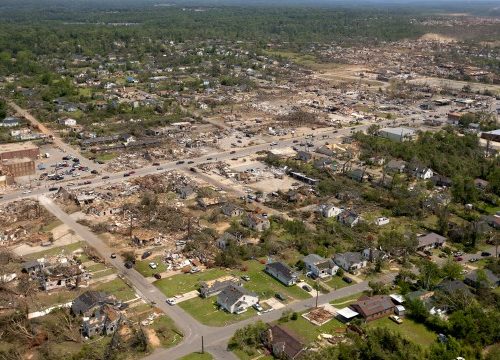Tornado alley it’s not, but Washington state is no stranger to twisters.
“We average just shy of two tornadoes a year,” said Ted Buehner, a warning-coordination meteorologist with the National Weather Service.
That adds up to 120 twisters from 1950 until last year, according to storm event data from the National Oceanic and Atmospheric Administration.
Most are rather weak tornadoes, like the one that touched down Thursday in Monroe. Nearly 85 percent of Washington’s tornadoes have been categorized on the Fujita scale (and the scale’s revised version, too) as at a strength of 0 or 1.
“They’re usually down and up in less than two minutes,” Buehner said. Wind speeds for EF-1 tornadoes top out at about 110 mph.
All together, tornadoes in Washington have killed six people and injured 303, according to the data.
Most of the carnage took place in 1972, a year that Washington — not Kansas or Oklahoma — had the country’s deadliest year for tornadoes, Buehner said.
An F3 tornado on April 5 caused the collapse of several buildings, including a discount shop, a supermarket and a bowling alley in Vancouver, Wash., according to Seattle Times archives. Six people were killed.
Dozens of children at an elementary school were injured in the “violent wind.” A 10-year-old said it was “raining bricks” as the roof of his school collapsed.
Also on that day, an F3 tornado struck in Lincoln County.
Although tornadoes can develop at any time of year, Buehner said spring and fall are most commonly when they strike because they are usually formed by thunderstorms.
“April is the peak of our season,” Buehner said.
When conditions are right, tornadoes can come in bunches.
In 1997, for example, 14 tornadoes were reported in Washington state, but three days saw four twisters apiece.
Often, “It’s not just one. You’re going to get a flurry of them,” Buehner said.
With a cool outlook forecast this month, “the odds are in our favor” for tornadoes, Buehner said.
A tornado is “a rapidly rotating column of air in contact with the ground,” Buehner explained.
“This time of year, we’re warming up in the low levels,” he said, referring to elevations. But also, “we’re getting a lot of cool, unstable air aloft coming from the Gulf of Alaska.”
Think of bubbles rising in a pot of boiling water.
“An analogy would be putting water on the stovetop and turning on the heat, creating an unstable air mass like that. You’ve got a lot of warmth at the bottom and cool air aloft,” Buehner said. “Air rises easily.”
So, what to do, should the (rare) tornado head in your direction?
Buehner said it’s best to go to an interior room in your home (a closet, bathroom or basement) and avoid windows.
“You don’t want to be at a window. The glass could go flying in your face,” he said. Grab a flashlight. Listen to the radio.
And take solace that you don’t live in the Midwest, where this is a well-practiced routine.
by Evan Bush
March 31, 2017





